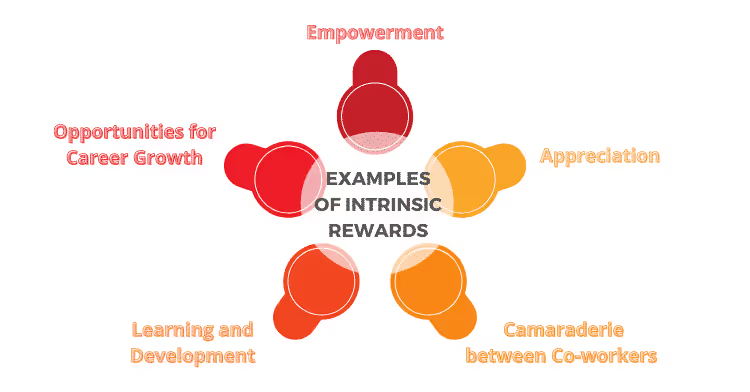Uncover The Key Elements and Components of Total Rewards Package | Decode The Strategy

The Total Rewards Model is a framework that companies use to manage and design their employee compensation and benefits programs. It's a holistic approach that considers all of the components that contribute to an employee's overall satisfaction and well-being, including financial and non-financial elements.
The goal of the Total Rewards Model is to offer employees a comprehensive package that not only meets their basic financial needs but also addresses their broader needs and aspirations. This model helps organizations attract and retain top talent, increase employee engagement, and create a positive work environment.
The components of the Total Rewards Model typically include base salary, bonuses, benefits, work-life balance, career development opportunities, and recognition programs. Companies may also include other elements, such as wellness programs, flexible work arrangements, and time off policies, to create a well-rounded total rewards package.

With the rising demand for professionals and the war to attract, engage, and retain them, employers are utilizing the best possible way to show employees what they are offering.
Yes, you guessed it right! We are talking about TRS or the Total reward statement. A Total Reward Statement is provided by the organization to help employees understand the value of their salary package.
But, what does this TRS exactly mean and why is it provided? Let’s dive into all you need to know about TRS. Let’s begin!
Total Rewards Typically Consist of the Following Components
- Financial Rewards
- Non-Financial Rewards
- Intrinsic Rewards
Financial Rewards
Financial rewards are a component of an employee's overall compensation package and refer to the monetary compensation and benefits provided by an employer. This can include:

- Base Salary: The regular, ongoing pay that an employee receives for their work.
- Bonuses: An additional payment, typically tied to performance or company success, that is provided to employees in addition to their base salary.
- Stock Options: The opportunity to purchase company stock at a discounted price, which can provide a financial benefit to employees over time.
- Benefits: A wide range of programs and services that support an employee's financial and physical well-being, including health insurance, retirement plans, and paid time off.
- Retirement Plans: Programs that help employees save for their future and provide financial security in retirement, including 401(k) plans and pension plans.
Financial rewards are an important part of an overall total rewards package, as they directly impact an employee's financial well-being and provide financial security for their future.
Non-Financial Rewards
Non-financial rewards refer to incentives, recognition, or benefits given to employees that do not involve money. Examples of non-financial rewards include:

- Time off: additional vacation days or time off
- Recognition programs: employee of the month, service awards, etc.
- Professional development: training programs, workshops, conferences, etc.
- Work-life balance: flexible work hours, telecommuting, etc.
- Career advancement: opportunities for promotions, new challenges, and growth.
- Perks and benefits: gym memberships, on-site perks like free snacks, etc.
- Personal development: access to personal development resources, coaching, etc.
Non-financial rewards can be effective in boosting employee morale, motivation, and engagement. They help create a positive workplace culture and show employees that their contributions and efforts are valued.
Intrinsic Rewards

Intrinsic rewards are non-monetary rewards that come from within an individual, such as a sense of personal satisfaction or accomplishment. They are the personal benefits or gratifications that individuals experience as a result of their actions, decisions, or accomplishments.
Examples of intrinsic rewards include:
- Sense of purpose or fulfillment: feeling that one's work has meaning and is making a difference.
- Autonomy: having control over one's work and decisions.
- Mastery: feeling a sense of progress and improvement in one's skills and abilities.
- Recognition: receiving praise or recognition for one's work.
- Personal growth: learning new skills and expanding one's knowledge.
Intrinsic rewards can be highly motivating for individuals and contribute to job satisfaction, engagement, and overall well-being. They align with an individual's values, interests, and goals, making the work experience more meaningful and enjoyable.
The components of total rewards can vary by company and industry, but these are the most common elements. The aim of total rewards is to provide a comprehensive package that aligns with an employee's individual needs and supports the goals of the organization.
Total Rewards Strategy Presentation
A Total Rewards strategy presentation is a visual representation of an organization's approach to employee compensation and benefits. It outlines the various components of the Total Rewards Model, and how they are used to create a comprehensive and competitive package that meets the needs of employees and supports the goals of the organization.
The presentation should start by introducing the concept of Total Rewards and explaining its importance. It should then describe the components of the model, including compensation, benefits, work-life balance, career development, and recognition and engagement.
For each component, the presentation should provide details on the specific programs and initiatives that the organization offers, as well as the benefits of each. It should also explain how these programs align with the company's overall mission and values, and how they help to attract, retain and engage employees.
Finally, the presentation should include a summary of the overall Total Rewards strategy, and why it is important for the success of the organization. It may also include information on how the strategy will be communicated to employees and how it will be reviewed and updated on a regular basis.
Overall, the Total Rewards strategy presentation should provide a clear, concise, and compelling picture of the organization's approach to employee compensation and benefits.
What is TRS or Total Reward Statement?
A total reward statement or TRS is an official document that gives a view of the overall value the company offers to its employees as part of the relationship. Basically, the document helps you know the real value of the employment relationship, as part of the company’s Total Reward Strategy.
The reward statement of a company aims to be broad. Many organizations provide access to employee offerings like wellness programs and learning opportunities as part of their program.
This reward statement is created with the help of various role players but is owned by the company’s HR department.

TRS can be used by organizations as a part of the negotiation process with new employees. Later on, this document can be used as a medium for the employees to become aware of the value your organization is providing. This results in employee retention and engagement with the company.
Some Major Advantages of TRS?
Here are some reasons and benefits of having a total reward statement. Check it out;
1) Improve self-confidence
Compensation is always more valuable than having a pay cheque, at the end of the month. Employees working in organizations are not always aware of their compensation package or how much benefits or premiums and insurance they are receiving. The Total Reward Statement provided by an organization binds together all these components for the employees to find out their value or importance in the organization. As a result, this boosts their self-confidence and encourages them to work harder.
2) Attract new employees
A Total reward statement acts as a medium or tool to attract new employees. The statement is crafted in a manner so that the employees can see the accurate breakdown of their compensation. This helps the organization to work better in engaging key individuals. In their incentive plan, the company ensures to show the walk-away value of their equity awards and vesting options. This makes the employees attracted to your organization.
3) Increases engagement
Employees are not always aware of the benefits the company is providing to them. With Total reward statements, you can help them know which benefits they are provided with and how they can use the same. These statements can even be used by companies to plan acknowledgement for new talents. Therefore, the employees love investing their effort in the organization.
4) Educate
These customized statements, issued by the organizations are good enough to educate the employees about the company’s culture and branding. The total reward statement can be used as a tool for educating the workforce and escalating the company’s mission and principles.
5) Decrease workload
Most companies integrate with your HRIS (Human Resource Information System) and third-party providers to deliver programmed data feeds for your statement. This helps in the quick and easy upload of information through spread sheets. The best part is that you can simply create PDF versions of these statements for your purpose.
What is included in the statement?

1) Base pay
2) Variable pay
3) Company car allowance
4) Private medical or dental insurance
5) Season ticket allowances
6) Cycle-to-work schemes
7) Share options, incentives, and bonuses
8) Employer pension contributions
The company can also include items that are difficult to quantify like discount schemes and policies, L&D programs, etc.
Features of TRS or Total Reward Statement
Check with the features of TRS, issued by the companies for the benefit of employees.
1) Interactive
These statements are quite responsive and accessible on both mobile and tablet. They feature hovering text, and a customizable glossary to help employees understand their benefits and compensation without any doubt.
2) Engagement
The statement allows employees to submit their personal information and capture plan acknowledgment as well. They feature insights with the ability to track access and the type of device.
3) Availability
All these statements are mobile-enabled. Employees can receive these statements the way they want to. It is nothing like you need a computer or laptop to have access to these statements.
4) Customizable
Employees working in an organization receive different levels of compensation and benefits. The company’s dynamic statements allow you to control the visibility of these compensations.
5) Security
Every company store these reward statements in a highly secured cloud solution. You need to enable a single sign-on with your directory or have to fill up a form for authentication.
Conclusion
A total reward statement will always be known for being a valuable tool for companies to create awareness of the true value of the employees. In the world of competition, understanding the value of rewards is very essential. Providing benefits and compensation to an employee will definitely help your company grow faster. This can be used as a tool to attract new talents and add tangible value to the organization.
Also Read: Tangible Rewards: The Complete Guide
Find out how Compport can help you manage all your Total Rewards process, book a demo today!
%2520(6)%2520(2).avif)


%20(49).png)
%20(48).png)
%20(47).avif)
